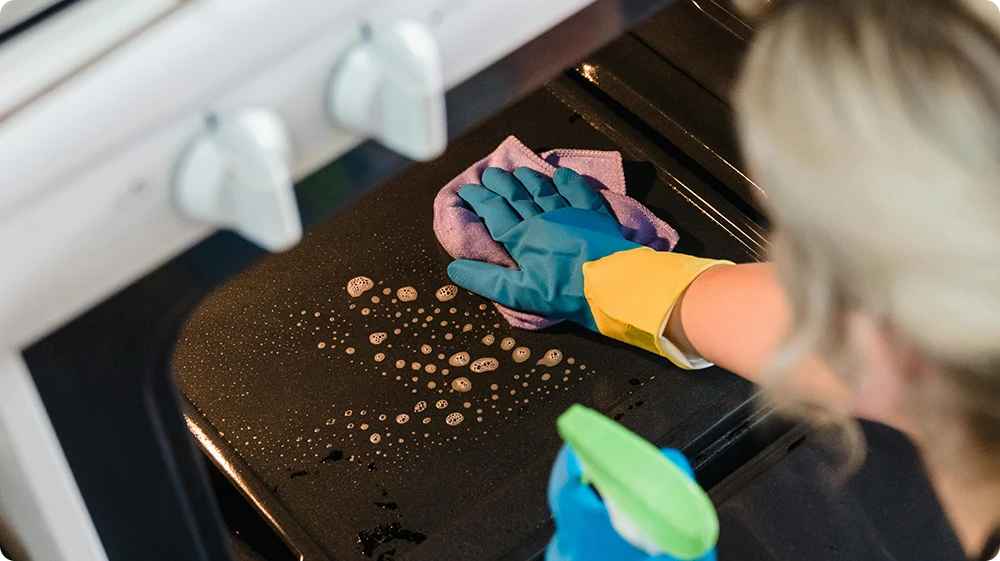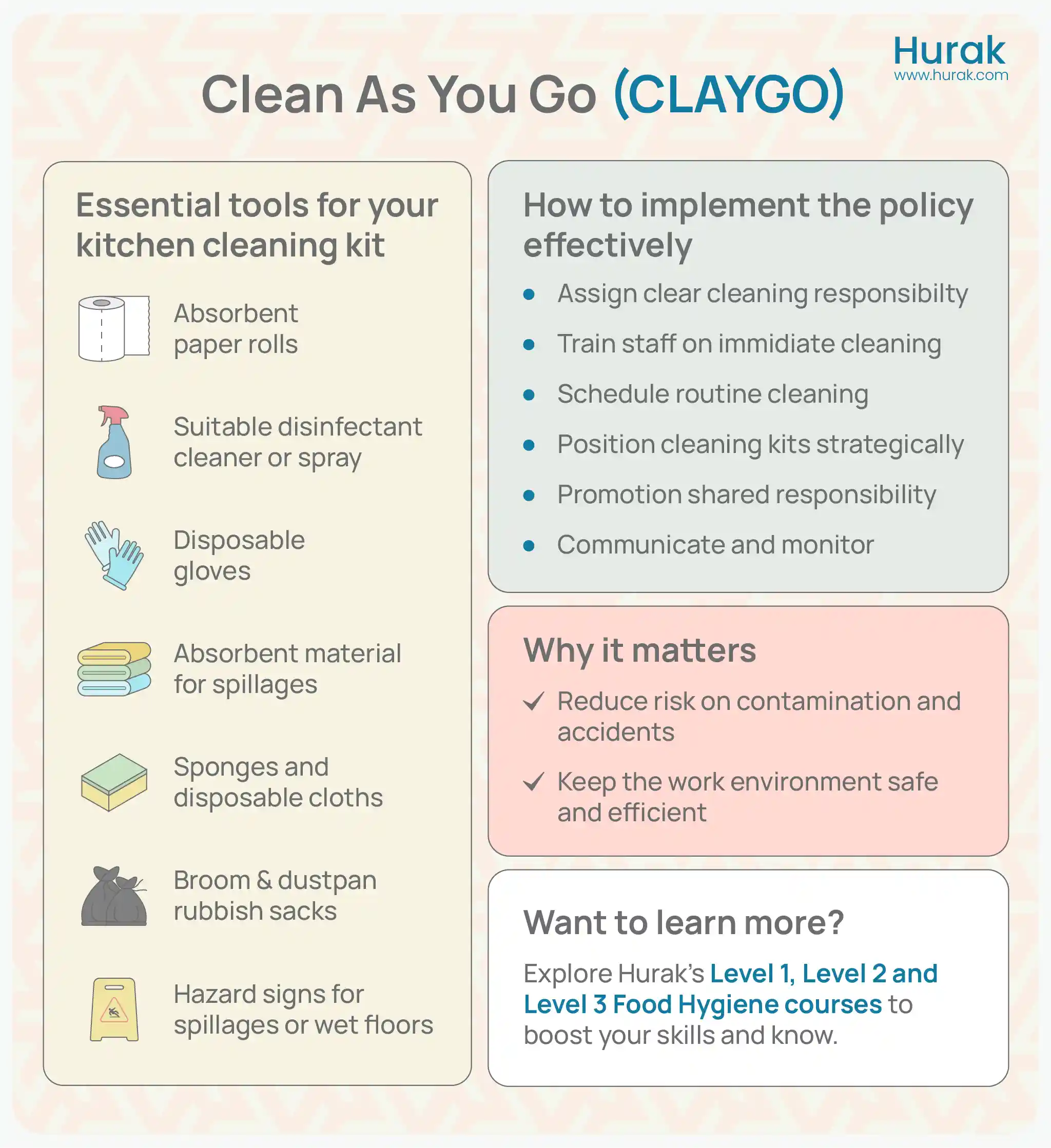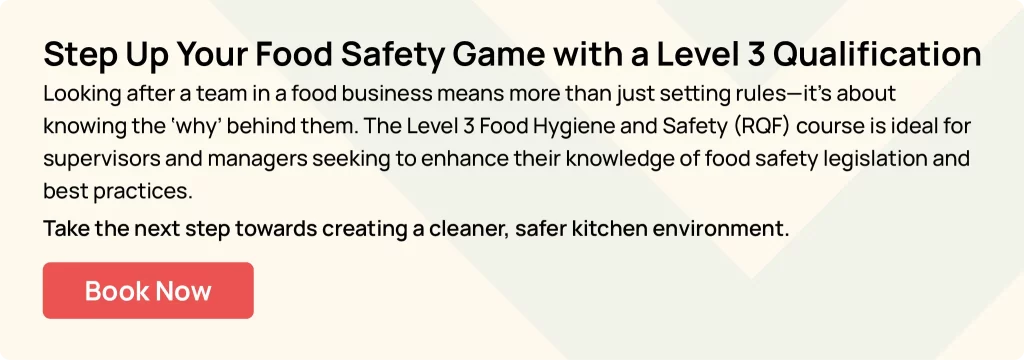“Clean as you go” may appear to be a simple concept, but it can be challenging to implement in practice, especially in high-pressure workplaces with multiple staff members. Without proper structure and clearly defined responsibilities, this straightforward idea can quickly lead to confusion, missed tasks, and serious concerns regarding food safety and food hygiene. To be effective, the policy must be well-organised and embedded into the daily workflow to maintain a clean and safe environment.
A clean as you go (CLAYGO) policy is a cleaning strategy that promotes continuous cleaning throughout the working day. It encourages staff to view cleaning as a routine responsibility, rather than a one-off task, thereby helping to maintain hygiene at all times.
In this article, we’ll explain what clean as you go means, how CLAYGO policies work, the tools required, how to implement them effectively in the workplace, and more.
What do you mean by Clean as you go?
Clean as you go (CLAYGO) is a standard policy widely used in professional environments like hospitality and catering. It is a cleaning method that involves cleaning work areas immediately after completing a task, rather than leaving it for the end of the shift.
For example, it could mean a chef wiping down their workstation after preparing a dish or staff disposing of food waste and spills right away. This proactive approach ensures that cleanliness is maintained throughout the day.
Why Is It Important?
- Implementing a CLAYGO policy helps maintain consistent hygiene and reduces the risk of cross-contamination.
- It ensures compliance with food safety standards.
- It promotes a shared sense of responsibility – cleaning isn’t limited to just one role. From junior staff to senior managers, everyone contributes to maintaining a clean, safe, and professional work environment.

Types of Cleaning
Now that we understand what ‘Clean as You Go’ means and why it matters, let’s take a closer look at the two main types of cleaning.
In a professional setting, a Clean as You Go policy is typically divided into two key segments:
Immediate Cleaning
This type of cleaning is about acting fast. Spills, broken glass, or dropped food must be addressed immediately to prevent accidents or contamination. Staff should know precisely what to do and have cleaning materials readily available, such as gloves, paper towels, disinfectant spray, and warning signs. Quick action keeps the environment safe and prevents minor issues from escalating into major problems.
Routine Cleaning
Routine cleaning focuses on maintaining clean and hygienic work areas throughout the day. Tasks include wiping surfaces, clearing food waste, emptying bins, and cleaning tools or equipment after use. These jobs should be part of everyone’s daily schedule, not left until the end of a shift.
By clearly separating urgent clean-ups from regular tasks, it’s easier to keep the workplace running smoothly, safely, and to a high standard of hygiene.
Real Example: Cleaning Between Tasks to Prevent Contamination
A chef finishes prepping meat for lunch service and immediately disinfects the chopping board and work surface before starting on fresh vegetables to avoid contamination.
How to Implement and Manage ‘Clean As You Go’ in the Workplace
To make the ‘clean as you go’ policy effective, it must be incorporated into your daily routine. In a busy workplace, setting clear standards is essential.
Everyone should know exactly what they are responsible for. This avoids confusion, reduces delays in action, and ensures tasks are not just left for “someone else” to handle. Assigning specific cleaning responsibilities to staff based on areas, tasks, or time slots helps maintain order and supports a hygienic environment.
However, immediate cleaning tasks, such as spillages or breakages, must not require management’s approval. Staff members must be trained to act on them promptly to prevent any hygiene and safety issues.
A clear and clean-as-you-go approach not only promotes hygiene but also improves operational flow in high-paced environments, such as commercial kitchens.
Real Example: Quick Action After a Spill
A kitchen porter accidentally spills oil on the floor during a busy lunch service. Instead of waiting, they immediately place a wet floor sign, use absorbent granules to soak up the spill, and clean the area before anyone slips.
Steps for smooth implementation:
Once you’re clear on when and what to clean, the next step is to implement it and make this practice part of your team’s daily habits. Below are a few steps for implementing CLAYGO smoothly in your organisation.
- Outline cleaning duties clearly, specifying who is responsible for what and when.
- Train all staff, including both new and existing employees, so they understand the policy.
- Place cleaning equipment where it’s needed most, especially near food prep zones and walkways.
- Define disposal procedures, including waste management, and when bins must be emptied.
- Use signage or checklists, as visual reminders of key cleaning responsibilities.
After putting your ‘Clean as You Go’ (CLAYGO) plan into action, it’s equally important to ensure that your staff are well-trained and consistently supported. Ongoing training and regular monitoring are crucial for maintaining the policy and ensuring it becomes an integral part of your workplace culture.
Staff Training, Monitoring, and Refresher:
How to Train Staff
- Deliver training as part of onboarding for all new employees.
- Use practical demonstrations—walk through what immediate vs routine cleaning looks like in real kitchen settings.
- Provide visual aids, such as cleaning checklists and the CLAYGO poster.
How to Track Compliance
- Use a daily cleaning checklist that staff must tick off and sign at the end of their shift.
- Supervisors should conduct spot checks to ensure that cleaning is done correctly and not just ticked off.
- Encourage peer accountability by having team members remind each other of their CLAYGO duties.
How to Refresh Training
- Schedule regular refresher sessions (monthly or quarterly).
- Review hygiene-related incidents during team meetings and utilise them as learning opportunities.
- Update posters and checklists if procedures change to keep materials relevant and engaging.
Essential Tools to Support the Clean as You Go Policy
In a busy kitchen, cleanliness and speed go hand in hand, and the staff needs to have access to the right tools at all times. These tools help ensure that food areas remain safe, hygienic, and clutter-free throughout the day.
Here are the essential items every kitchen must have in a cleaning tool kit:
- Blue roll or absorbent paper towels – Ideal for wiping spills, drying hands, and keeping surfaces dry.
- Food-safe disinfectant spray – For sanitising worktops, utensils, and preparation areas.
- Rubbish sacks or waste bins – Easily accessible for immediate disposal of food waste and packaging.
- Absorbent granules or spill powder – Useful for soaking up oil, sauces, or any liquid spills quickly and safely.
- Sponges or disposable cloths – For regular cleaning of surfaces and kitchen tools.
- Dustpan and brush – To sweep up crumbs, food particles, or broken items efficiently.
- ‘Wet Floor’ or hazard warning signs – To mark freshly cleaned areas and prevent slips or accidents.
Having a well-stocked cleaning kit within reach supports hygiene and promotes a smooth and safe kitchen operation.
To make it even easier for your team to stay on track, we’ve created a visual reminder you can display in your workspace.
Clean As You Go Poster – Essential Tools and Tips for a Safer Kitchen
Use this poster to understand the CLAYGO (Clean As You Go) policy at a glance. It highlights the key cleaning tools your kitchen should have and outlines clear steps for effective implementation, even in the busiest work environments.

Download our ‘Clean as You Go‘ poster to help your team follow hygiene standards visually and consistently.
FAQ’s
What does “Clean As You Go” mean?
Clean as you go means cleaning work areas, tools, and surfaces immediately after use rather than waiting until the end of a shift. It’s a proactive hygiene approach that helps reduce the risks of cross-contamination and supports a safer, more efficient workspace, especially in kitchens and food-handling environments.
What is a Clean As You Go policy?
A clean-as-you-go policy is a structured cleaning system that encourages staff to clean continuously throughout the day. It outlines responsibilities, schedules, and standards for maintaining hygiene throughout the workplace. This policy is particularly essential in industries such as food service, hospitality, and healthcare.
What tools are needed for a Clean As You Go system?
Essential clean-as-you-go tools include paper towels or blue roll, food-safe disinfectants, sponges, dustpans and brushes, rubbish sacks, spill granules, and ‘Wet Floor’ signs. Having these items readily available helps staff act quickly and maintain hygiene throughout the workday.
Can I download a Clean As You Go poster?
Yes, a clean as you go poster is available to help staff visualise and understand the policy. It outlines key tools and responsibilities, making it easier to train teams and maintain a high level of hygiene. Scroll up to download the CLAYGO poster directly from this article.
What is the difference between “clean as you go” and “clear and clean as you go”?
Clear and clean as you go refers to removing clutter (clearing) and cleaning surfaces simultaneously. This two-step process is especially effective in kitchens where hygiene and efficiency are crucial. It’s a common practice recommended by food safety authorities in the UK.





